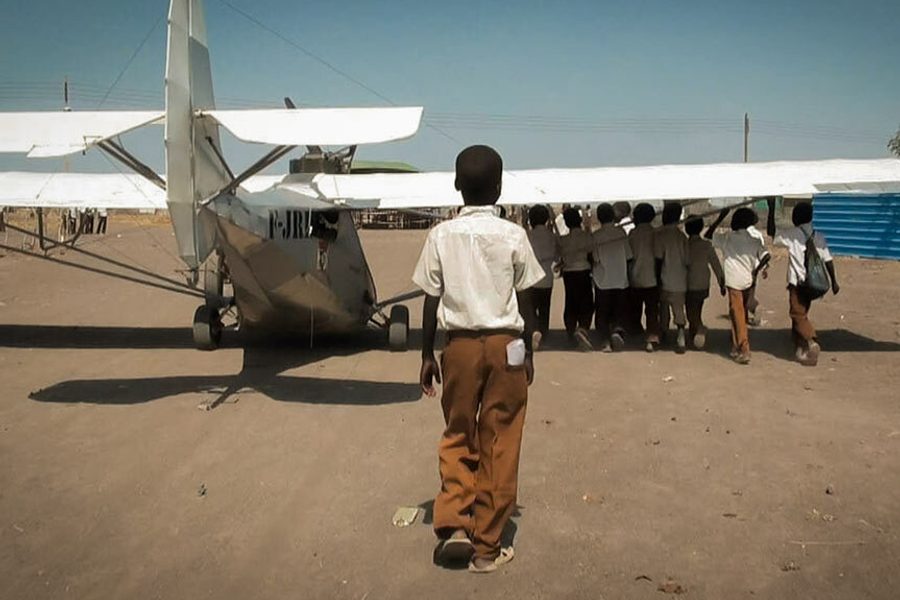Why the Youngest Country on Earth Can’t Escape the Yoke of Colonialism
‘We Come as Friends’ captures the Western exploitation of South Sudan from the moment of its conception
Michael Atkinson

Hubert Sauper’s new documentary, We Come as Friends, is terrific iceberg media — honing in on the tip of a human crisis but evoking the vast global and historical freight beneath. The larger part of the iceberg is the legacy of 500 years of European colonialism. The tip is the newly established nation of South Sudan, filmed just as it split from the north in 2011. Sauper, the veteran Austrian director whose 2004 doc Darwin’s Nightmare used the iceberg model to devastating effect (illustrating worldwide inequity through Western exploitation of Tanzania’s Lake Victoria), is a keen-eyed moralist for whom, per Faulkner, the past is never past.
Holding onto history is vital in no small part because that’s exactly what Sauper’s primary nemeses — foreign capitalists and the African power-opportunists they fund — don’t want us to do. Colonialism, to popular media, is an obscure figment of the past, long vanquished. Sauper’s point, which he makes with sometimes dazzling eloquence, is that it has only mutated into new forms. We knew that already — but Sauper brings it home in new ways by voyaging to the Horn of Africa aboard a tiny plane he built himself, flying with only a co-pilot (documentarian Nick Broomfield’s son, Barney) and making unannounced landings all over rural South Sudan.
The referendum vote for South Sudanese independence is the pretext, but Sauper never sees this political milestone as significant — indeed, for the people, it might be the devil they don’t know, as the new nation opens doors for all variety of neocolonial activity. U.N. peacekeepers dwell in huge encampments, Chinese oil workers play pool in bulletproof enclosures, and all the while the South Sudanese starve and drink industrially poisoned water and nurse bitter recollections of Western exploitation.
“Did you know that the moon belongs to the white man?” one South Sudanese man is heard asking. Like Sauper, the new country’s citizens have long memories, and the filmmaker has little trouble finding villagers (some with American educations) who can rattle off the litany of European and American occupations and abuses running back centuries. But We Come as Friends truly excels when Sauper steps into traditional documentarian shoes, simply watching today’s foreign interlopers grin, chat and expose their hypocrisies.
The iceberg per se is never completely masked by the propaganda, whether it streams from an appalling “development” conference of multinational corporations and entrepreneurs looking to cash in on the new nation, the transparently mercenary Chinese petrol managers, or the U.N. heads themselves, whose mission is to usher in development by way of (and to the benefit of) the West.
Sauper even spends time with a gaggle of Texan missionaries, who quite plainly describe their aim as “changing” the locals, making the children wear clothes because the Bible says so and forcing them to accept new ideas of ownership as communal land is simply appropriated and fenced off for the Texans’ homes. In the Christian schools, teen girls tell us, students are beaten for wearing traditional clothes and jewelry. At home we’re awash with acceptance-of-difference norms and legislation, but on the massive frontiers of the neocolonialist world, nothing is accepted so much as conformity and obedience.
Sauper’s airborne footage of the color-saturated African plains is beautiful; possibly too beautiful, too aestheticized. What’s more, Sauper gets pretty self-involved with his voyage and his handmade aircraft, the unlikelihood of which initiates numerous conversations with his stupefied subjects that have nothing to do with the larger themes at hand. (This transfers to his publicity pronouncements, which mystifyingly call the film “almost science fiction.”)
But when the chips are down, Sauper knows how to use his camera: He films a display of self-satisfied foreign gluttony and glee — a Scotch-soaked party of mostly white U.N. “peacekeepers” celebrating the referendum — and pans out the window to catch a Sudanese janitor cleaning up the trash all alone. Independence has granted this man the opportunity to be a wage slave, but he’ll never be an owner. We can call it whatever we want, but colonialism remains as much a reality as it was a century ago.









